Growing maple on a trunk
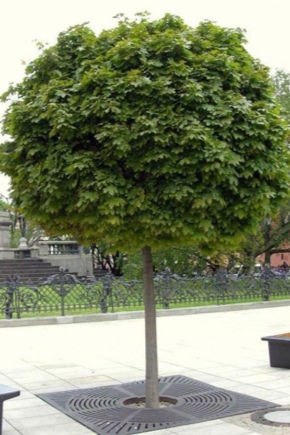
The maple on the trunk attracts lovers of original solutions in landscape design. In this article, we will look at how to grow such a maple with our own hands, how to graft and shape it.

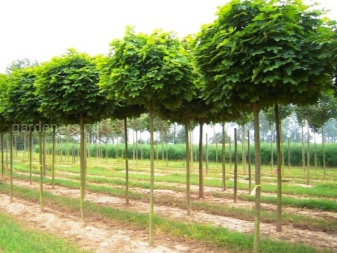
Description
The maple on the trunk is a deciduous tree with a dense spherical crown and a slender trunk. The plant looks festive and elegant at any time of the year. From spring to late autumn, a lush foliage hat will decorate the landscape. In winter, the branches of the round crown are covered with hoarfrost and take on a fabulous look.
The shape of the leaves and flowers of the tree, their color depends on the type of culture. The color palette is very rich: from classic green to black and silver shades. Maples bloom from April to May until the leaves open.
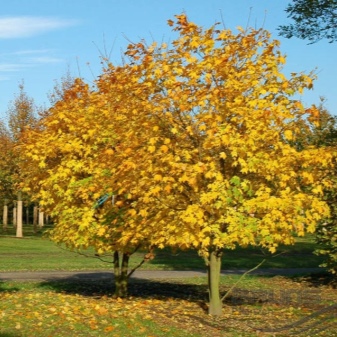
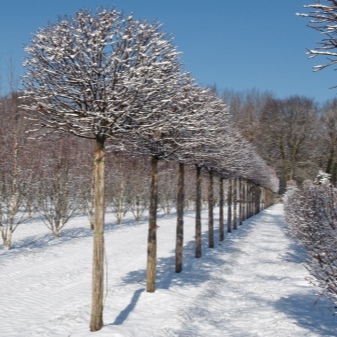
Classic - standard maples with a spherical crown. The side branches of the tree grow at a 45 degree angle. The trunk, freed from vegetation, is smooth, straight, looks neat and decorative. Saplings grow to a height of 2.5 m. Specimens that have reached from 5 to 6 meters are considered giants.
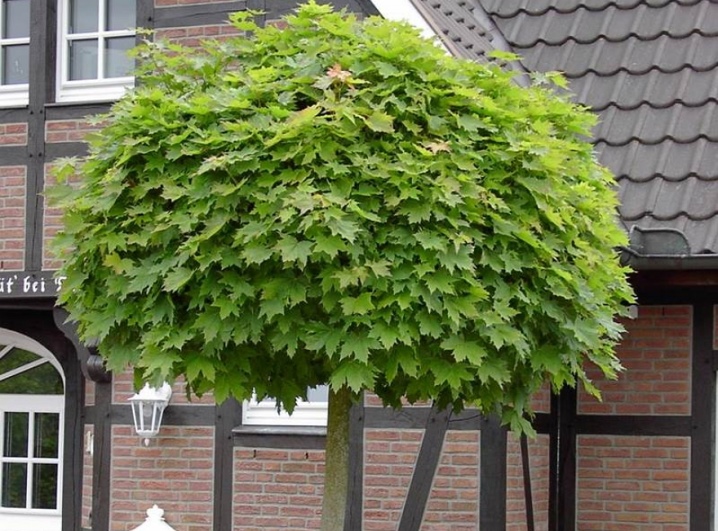
What types and varieties are suitable?
Familiarity with the varieties of standard maples will allow you to make the right choice.
"Flamingo"
The foliage of the plant has a pale pink color in early spring. This explains the name of the variety. In summer, it turns silvery green with a pale pink border. The diameter of the crown is about 4 meters, the height of the trunk is up to 5 meters.
The variety takes root easily and grows quickly. Unpretentious. Doesn't like bright sun, strong winds. "Flamingo" ash-leaved - long-liver. Taking good care of your plant will help your plant live up to 100 years.
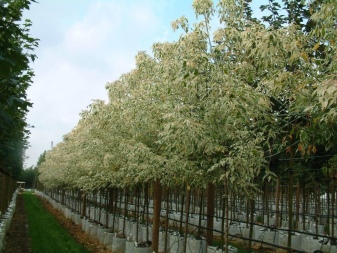
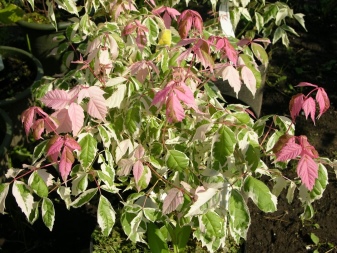
Golden Globe
It has a dense spherical crown up to 6 meters in size. Five-lobed leaves in summer acquire a golden hue in the sun, and in the shade - pale green. In the spring - orange and red. The flowering period is May.
The height of the giants is about 5 meters. The stem perfectly tolerates crown trimming, will allow you to form any design idea.
The variety is unpretentious to the soil. Prefers sunny, open places. Does not tolerate waterlogging and drought. Frost resistant.

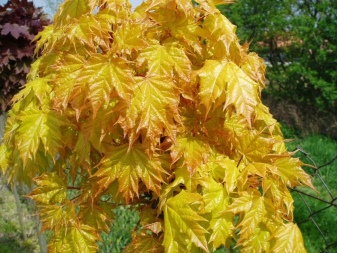
"Purple Globe"
A head of a tree with a volume of about 4 meters. The foliage is a deep purple color. Bloom from April to May. Yellowish-green inflorescences with a pleasant fragrant aroma. The tree is unassuming to the weather, but demanding to the soil. Prefers fertile moist soil. Does not tolerate saline soils. Life expectancy is about 200 years. Loves the sun, partial shade.
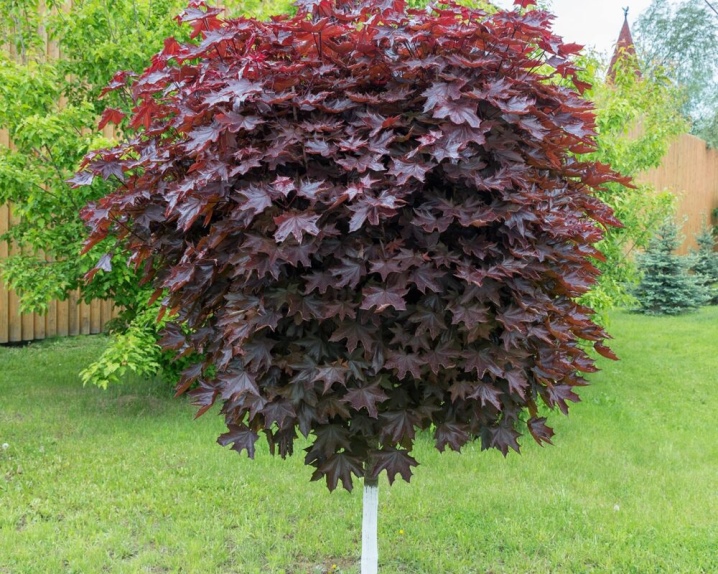
"Diamondissimum"
The size of the crown is from 3 to 4 meters. The shape of the shoots is drooping. Height up to 6 meters. The color of the foliage when blooming is white with a pink tint, changing to yellow in summer and then to green. The flowers are greenish-yellow, fragrant. Resistant to frost and drought. It tolerates the neighborhood only with conifers. Loves sunny places, fertile, drained soil.
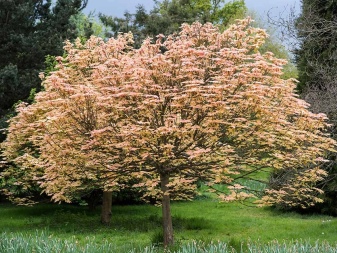
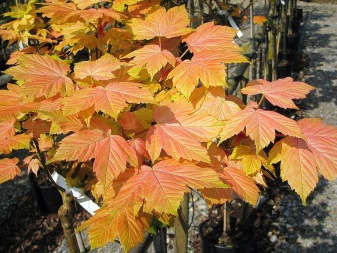
Silver maple
Spherical shape with a diameter of 6 meters. The foliage is double colored. The inside of the leaf is silvery white, the top is bright green. Red-green inflorescences bloom with the foliage. Maple turns bright yellow in autumn.
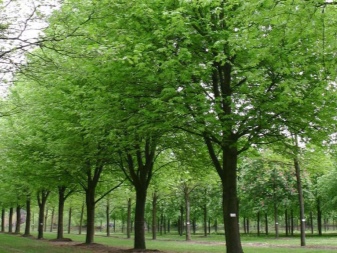
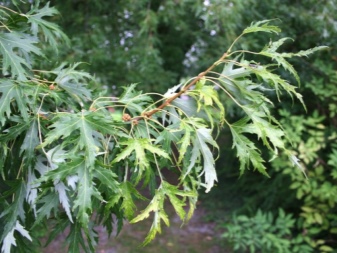
"Globozum"
The spherical lush crown reaches 5 meters. The height of the tree is up to 6 meters. Suitable for group and single plantings, unpretentious to the soil. Frost resistant. Grows in partial shade and in the sun. Green foliage changes in autumn to orange. Perfectly holds the shape of the crown. Grows in partial shade.

Other varieties will be the highlight of your site.
"Drummonda"
It is the smallest maple tree in the world. The kid is notable for the fact that it initially has a columnar shape, and with age transforms it into a spherical one.

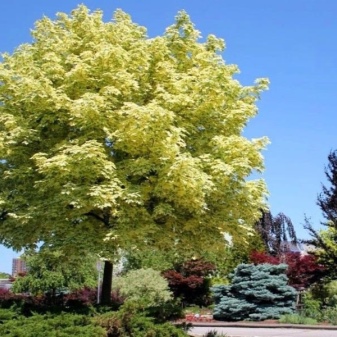
Emerald Queen
Maple surprises with leaves. Pink, turning into a bright burgundy, they are located at the top of the tree. Green foliage with a bronze tint completes the edging of the plant's head. A young tree has an egg-shaped crown and gradually changes it to a round one.
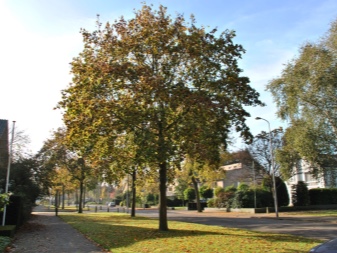
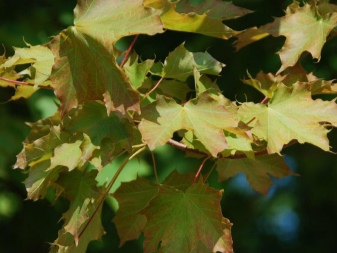
Cleveland
This is a giant among the maples. Its height is up to 12 meters. The giant has a standard shape by nature. Famous for its flowers, with a very delicate fruity aroma.
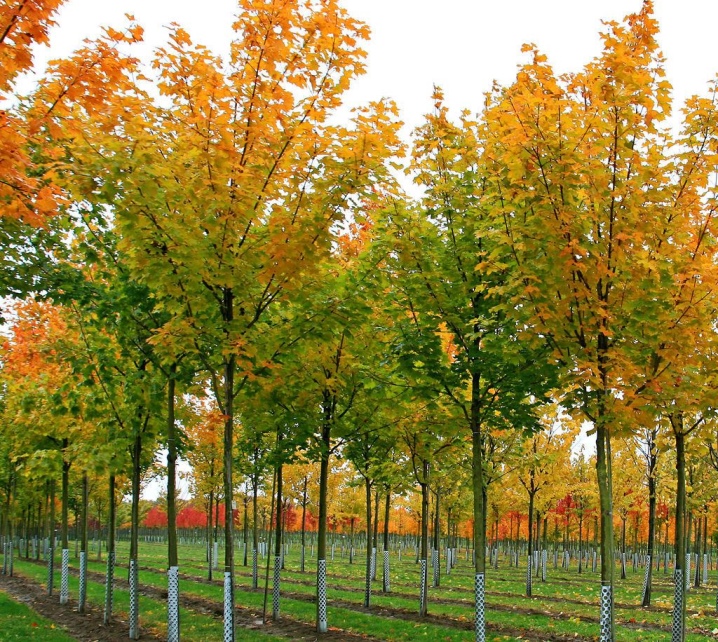
Tartar maple
The height of the tree is about 10 meters. The shape of the crown is round, crown-shaped. Culture is prized for its decorativeness. In the spring, the maple tree adorns the landscape with creamy white blossoms against a backdrop of green foliage. In the fall, the seeds and leaves turn bright red. The stem is shade-tolerant and frost-resistant.
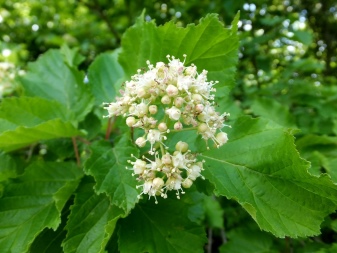
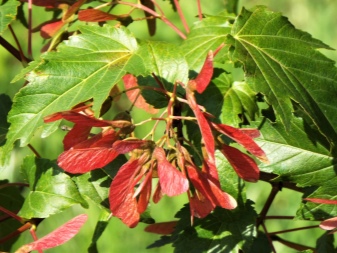
How to grow?
Growing a standard tree is easy if you follow the step-by-step instructions of experienced gardeners.
Designers advise the easiest option for beginners - to grow a stem on your own roots. It requires patience, but does not need a rootstock grafting operation. They begin to create trunks with the cultivation of a perfectly flat trunk and the formation of a beautiful crown.
- Choose a maple variety. Consider the planting site in advance, taking into account the peculiarities of the culture. The types of soils, illumination, proximity to other plants are important.
- Buy a seedling from a trusted nursery. The plant must be healthy. Bends, bends and knots on the trunk are not allowed. Choose a straight and smooth barrel. You can use stratified seeds for planting ornamental crops. They give excellent results, but grow 2-3 years later.
- Support the seedling and support the plant securely. This will help to form an even trunk. When planting a maple, do not deepen the root collar into the ground. Leave it flush with the ground.
- Watch out for the tree. After the first three leaves appear, remove the side shoots. The top of the tree must be removed when the seedling reaches a height of 1.5 m.
- Creation of a beautiful crown of the trunk. Young shoots are pinched at least once a month. This procedure forms even more shoots. The tree begins to branch. It will take 1.5 years, and the bole will delight you with a ball-shaped fluffy hat.
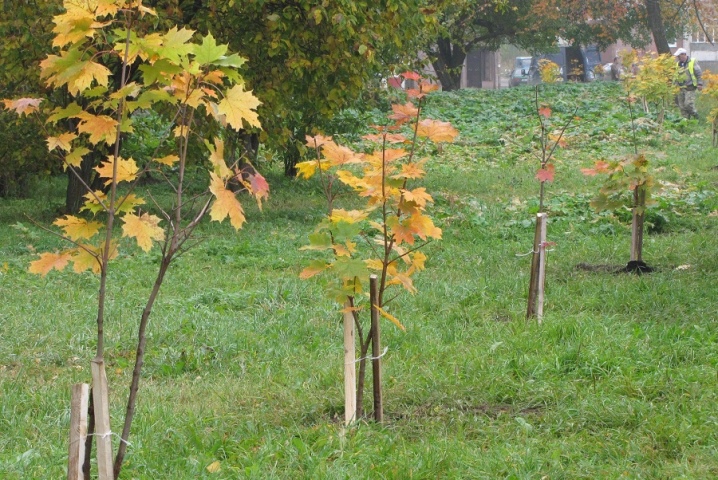
Stamp maples will delight you with their exquisite beauty when properly cared for.
Soil
Soil selection and planting site matter. Maples grow on level ground. Wet or swampy lowlands are not suitable for them. The constant influx and stagnation of moisture at the roots is detrimental to them.
Acidic, heavy and alkaline soils are not suitable for the plant. The crop prefers a neutral or slightly acidic soil, where the pH is not higher than 7.5, consisting of leafy soil, peat and sand.
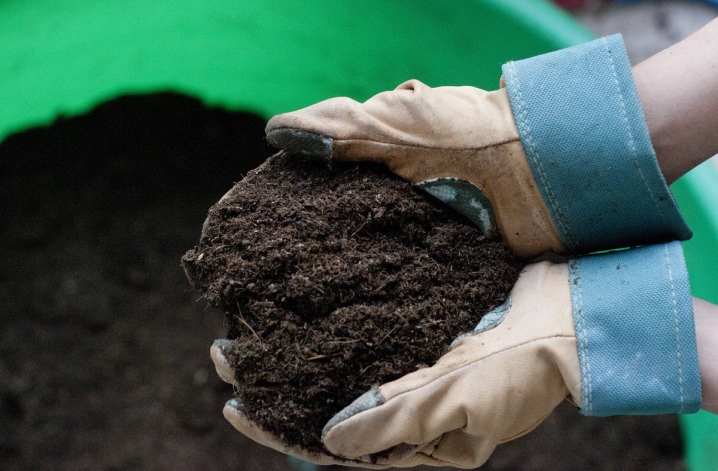
Fertilizers
The trunks are fed from the beginning of the growing season. During this period, plants need fertilizers containing phosphorus, potassium and nitrogen. In the summer they fertilize again, making a top dressing containing a full range of mineral fertilizers. It is convenient to add them when watering or loosening the soil.

Watering
Maple does not like waterlogging, but needs watering in summer. In normal weather, trees are watered no more than once a month. With prolonged heat and drought, watering once a week is required. This is especially important for plants with brightly colored decorative foliage.
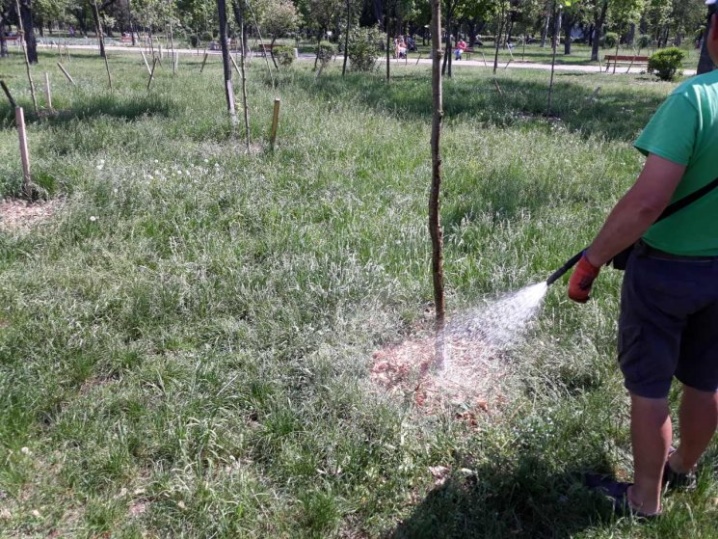
Loosening and mulching
It is necessary to keep the circle of the maple tree in order on the trunk. Removing weeds and lateral growth of the tree will preserve its decorative effect. Loosening gives air permeability to the soil, oxygenating the root system. Mulching with decorative material - gravel, pebbles, marble chips - will protect the plant from overgrowing with weeds and prevent pests from attacking it.
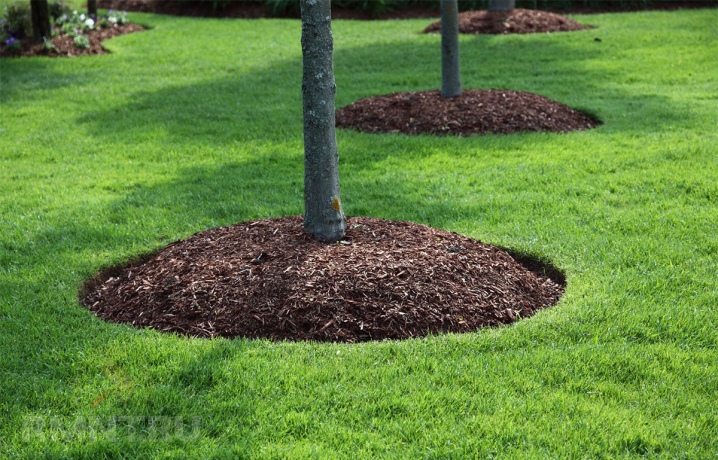
Pests and diseases
Enemies of the plant: bark beetles, mealybugs, scale insects, maple weevils, whiteflies, leaf beetles. Insects are destroyed by insecticide preparations.
Diseases: tinder fungus, spotting, powdery mildew. Control means - spraying with fungicide solutions, removing diseased branches.
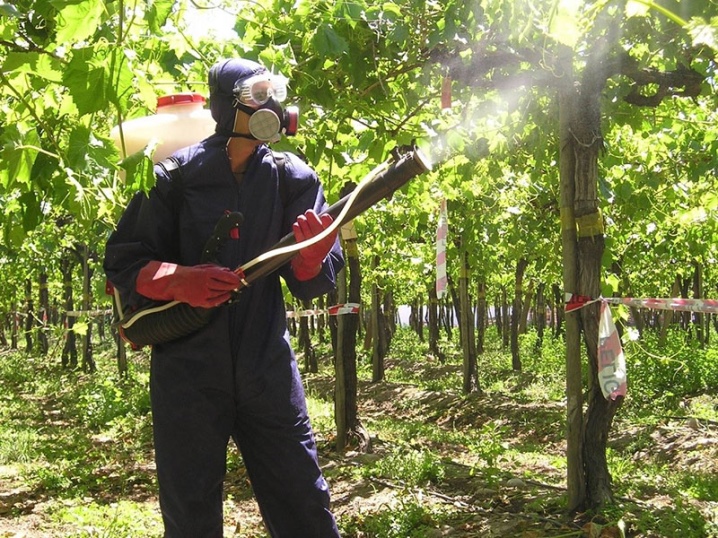
Wintering
The trunks of young trees are covered with burlap and spruce branches.
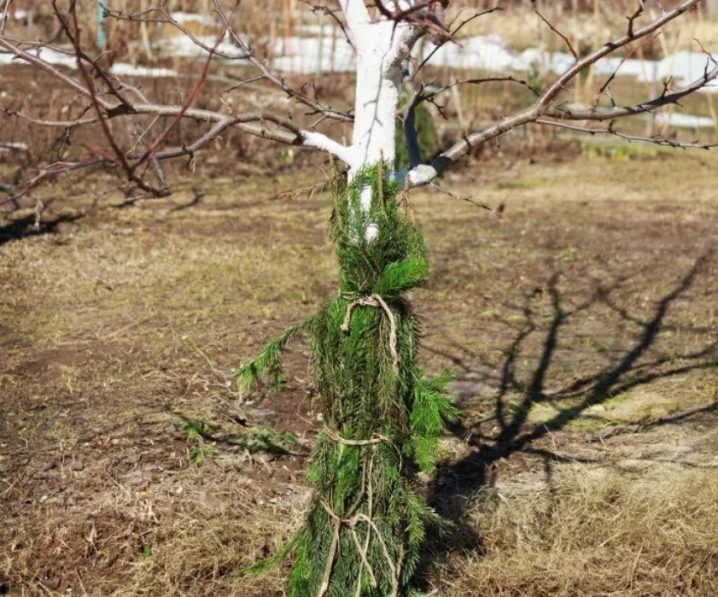
Graft
The method of growing maple on a trunk using grafting is more complicated.
For grafting, you need to grow a young tree, following the instructions already known to you:
-
choose a seedling;
-
plant a tree using a support;
-
removes unnecessary side shoots;
-
cut off the top of the head in a timely manner to give the crown a shape;
-
remove conductor branches that violate the spherical appearance of the culture.
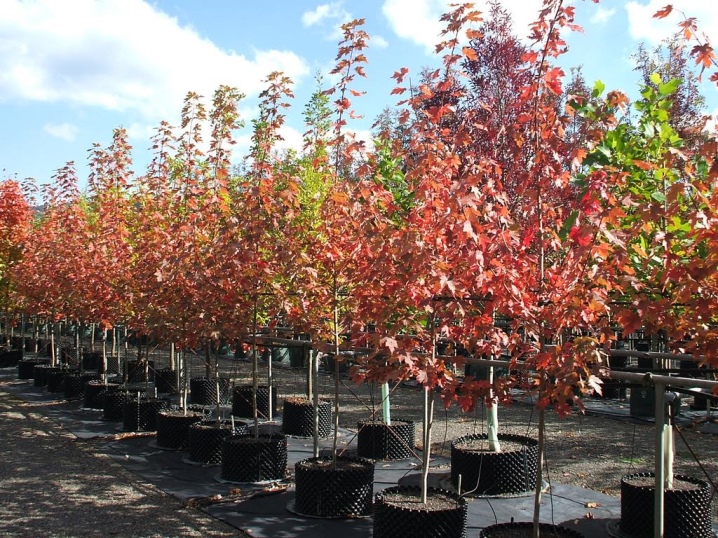
After 2 years, the rootstock seedling can be grafted. As a scion, you can use the native shoots of the tree, or pick up a related culture. Vaccination is done in mid-spring:
-
prepare a stalk with three buds;
-
make a slanting notch over the upper bud of the scion;
-
at the bottom of the shoot, make a wedge with 2 cuts;
-
the scion is carefully inserted into the stem, having previously made an incision near the kidney;
-
process the junction with garden varnish and fix it with plastic wrap.
After a month, the stock takes root to the seedling. New buds wake up on the cuttings, and then young shoots.
New branches are the basis of the future chic crown. It is very important to pinch them in time, stimulating the growth of other new branches from the dormant lateral buds. After 2 seasons, the tree will transform and become a worthy decoration of the landscape.

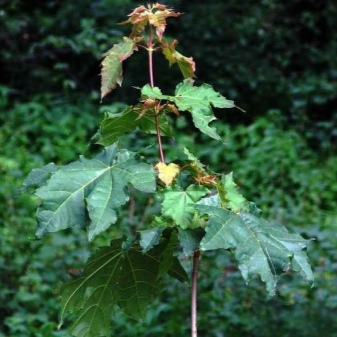
Pruning
The pruning procedure helps to grow maple on a trunk.
Formative
This type of pruning is required for maples that do not have a natural globular crown.
Cutting young trees to form a beautiful spherical head is done from the beginning of the growing season. It is carried out several times, at least every 3-4 weeks. The branches-conductors, directed upwards, breaking the round shape, are necessarily cut off. All lateral shoots are pinched. This stimulates the awakening of new buds and the growth of new young branches. Shoots that appear along the trunk are cut off.
Shoots growing inside the crown are removed, old branches are shortened. This helps to withstand winter hurricanes and snow storms, to maintain the correct shape of the crown.
Do the formation of a maple cap, trying not to remove more than 1/3 of the shoots, moving clearly along the edge of the crown.
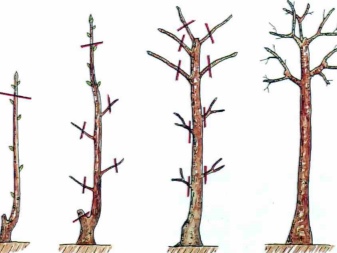
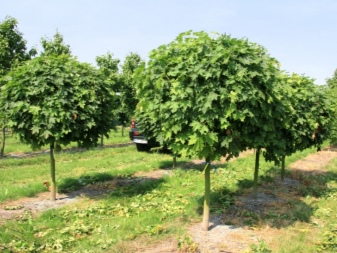
Sanitary
Sanitary thinning is necessary for any boles. The goal is to keep the decorative tree healthy. Frozen, rotten, dry shoots spoiled by insects are cut off. Branches with an atypical leaf color for the variety are removed.

Application in landscape design
Standard maple is a favorite of gardeners. It is appreciated for its unpretentiousness and beauty. Plants create a special accent in the landscape. Fits perfectly into any style and design. They make the overall picture textured and colorful thanks to the variety of colors and the unique shape of the leaves.
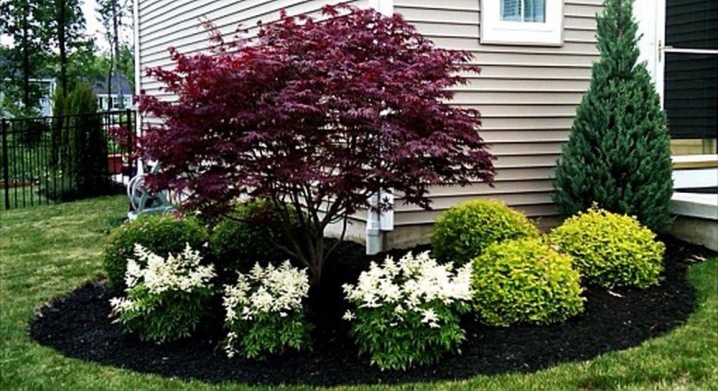
It is impossible to imagine a city without the symbol of autumn - maple. His lush hats can be seen in the city garden, in squares, alleys and parks. Maples perfectly tolerate the gas pollution of dusty city roads. They are planted as hedges along busy streets. They decorate squares and playgrounds, creating an excellent green area where you can hide from the heat.

Culture is used not only in mass ensembles. Trees are planted on lawns one by one, in a zigzag or staggered pattern. The trunks look great in symmetrical plantings near buildings. They are combined with flowering lush shrubs, flower beds and tall, pyramidal trees.

On personal plots, standard maples are indispensable for creating picturesque alpine hills and rocky gardens. They emphasize the subtlety of the oriental style, without overshadowing the beauty of stones and creeping low-growing plants.
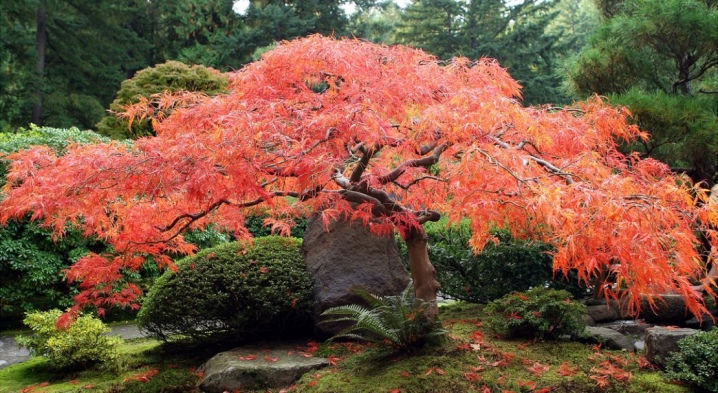
Low-growing standard maples were appreciated by lovers of tub plants.This is a great opportunity to create miniature gardens in areas where there is no way to plant live trees.

Tips for curly pruning the crown of a maple tree on a Flamingo stem in the video below.



































































The comment was sent successfully.